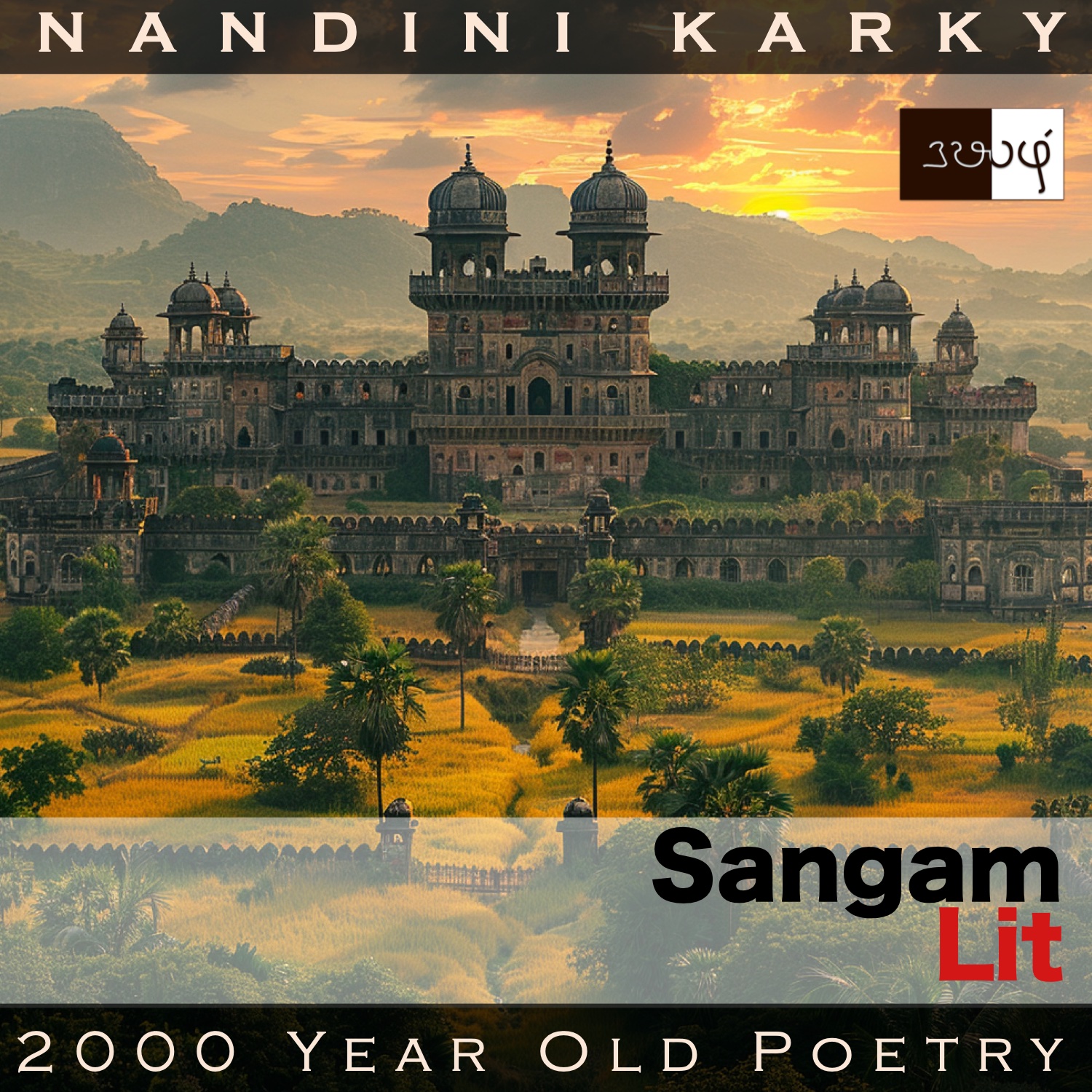Podcast: Play in new window | Download
Subscribe: Apple Podcasts | Spotify | Amazon Music | Android | iHeartRadio | Email | TuneIn | RSS | More
In this episode, we explore a prosperous town in ancient times, as depicted in Sangam Literary work, Puranaanooru 338, penned by the poet Kundroor Kizhaar Makanaar. The verse is situated in the category of ‘Kaanji Thinai’ or ‘Defence’ and reveals the power that a father of a daughter had in the Sangam era.

ஏர் பரந்த வயல், நீர் பரந்த செறுவின்,
நெல் மலிந்த மனை, பொன் மலிந்த மறுகின்,
படு வண்டு ஆர்க்கும் பல் மலர்க் காவின்,
நெடு வேள் ஆதன் போந்தை அன்ன,
பெருஞ் சீர் அருங் கொண்டியளே; கருஞ் சினை
வேம்பும் ஆரும் போந்தையும் மூன்றும்
மலைந்த சென்னியர், அணிந்த வில்லர்,
கொற்ற வேந்தர் வரினும், தன் தக
வணங்கார்க்கு ஈகுவன் அல்லன் வண் தோட்டுப்
பிணங்கு கதிர்க் கழனி நாப்பண், ஏமுற்று
உணங்கு கலன் ஆழியின் தோன்றும்
ஓர் எயில் மன்னன் ஒரு மட மகளே.
A song filled with descriptions of prosperity and wealth. The poet’s words can be translated as follows:
“With fields traversed by ploughs, pastures brimming with water, houses filled with paddy, streets strewn with gold, protected forests with many flowers buzzing with bees, akin to Ponthai, ruled over by the tall-speared Aathan, she is someone who possess great wealth; Even if the three victorious kings, wearing head garlands of neem from dark branches, orchids and palm flowers, and holding bows arrive there, if they do not offer him the respect that is due to him, he will not render unto them, his only daughter. Such is the nature of this king, who holds a fort that stands radiantly amidst the luxuriant blades of crops in the farmland, appearing like a ship tied at shore, amidst the waves of the sea!”
Let’s delve into the details here. The poet brings before our eyes a lush town from the past, pointing to neatly ploughed fields and rich water resources that abound there. With these elements present, one can expect houses to be heaped with mounds of paddy and signs of prosperity glowing as gold in the streets, which the poet then reveals to us. From this financial prosperity, he turns to the natural world and talks about the many protected forests there filled with flowers and bees. An idyllic place is etched by this poet to describe the wealthy town that is said to belong to a young lady. To further quantify her wealth, the poet compares it to the wealth of a rich town called Ponthai, ruled by a great king named Aathan. The richness of that town should have been common knowledge then to be called in as a simile in this verse.
Returning, we find the poet now talking about the three great kings -Chera, Chozha and Pandya kings, who are identified by their respective head garlands of palm flowers, bahunia flowers and neem flowers. He says even if these emperors of the Tamil nation were to arrive to this town, if they do not render the right respect to the father of this young maiden we met previously, her father would refuse her hand in marriage to them, the poet declares. He then concludes describing how this king’s fort stands proud and tall amidst the far-extending golden crops in the fields, just like how a ship tied in the shore appears amidst the rolling waves of the sea behind!
The thought that came to me after delving into this verse was how the wealth of this king is considered as belonging to his daughter- a clear indicator of the importance accorded to the female child. Not only that, even if they are great emperors, they seem to be deemed at a lower status than this king of a minor region, just because this king happens to have a daughter. While such was the importance accorded to women two thousand years ago, somewhere along the way, this has changed to a patriarchal system that values only sons, leading to abhorrent practices such as dowry and even female infanticide. How did this culture of valuing women as precious and powerful vanish? What was the turning point that made this culture choose a tradition, which was the polar opposite of their values? Worthy questions to be pursued by researchers interested in the sociology and history of India!




Share your thoughts...